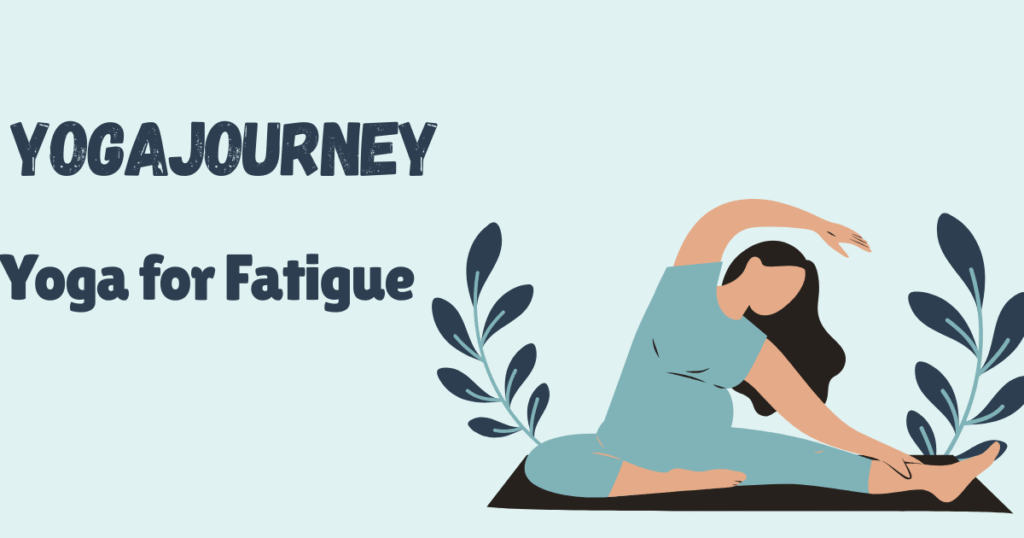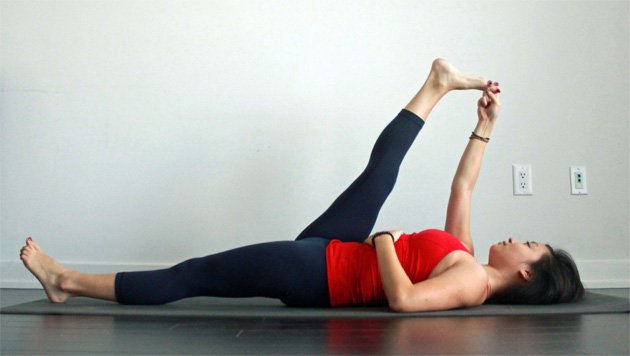
Yoga for Fatigue: A Holistic Approach to Restoring Energy
Fatigue is something we’ve all experienced. It can stem from physical overexertion, emotional stress, inadequate sleep, or poor nutrition. While a normal dip in energy can often be alleviated with a good rest, stress management, and proper nourishment, sometimes fatigue is a more complex issue that requires deeper introspection. Whether the solution is a physical fix or emotional healing, yoga can offer a comprehensive, holistic approach to tackling fatigue in all its forms—physical, emotional, and energetic.
In this article, we’ll explore how yoga not only relieves fatigue but also promotes greater self-awareness to uncover the underlying causes. By addressing both the body and the mind, yoga helps restore energy, balance, and vitality, offering long-term solutions to fatigue rather than just a temporary fix.
How Yoga Helps Relieve Fatigue

Yoga is incredibly effective in combating fatigue because it addresses the mind, body, and spirit simultaneously. By combining physical movement, relaxation, breathing techniques, and meditation, yoga works to restore energy, reduce stress, and boost prana (life force energy). Through a blend of postures and mindful practices, yoga can help you relax deeply, release built-up tension, and replenish your internal energy.
When practiced regularly, yoga activates the parasympathetic nervous system, the part of the nervous system responsible for relaxation and restoration. This allows the body to shift from a state of stress (sympathetic nervous system) to one of deep rest and rejuvenation, giving both body and mind a chance to recover.
Physical Causes of Fatigue

Some of the most straightforward causes of fatigue are physical. These include:
1. Insufficient Sleep
Lack of sleep is a major contributor to tiredness, and while yoga cannot replace sleep, it can improve the quality of rest. Restorative yoga poses can help you relax deeply, which may promote a deeper and more restorative sleep.
- Child’s Pose (Balasana)
- Supine Bound Angle (Supta Baddha Konasana)
- Knee-Down Twist (Jathara Parivartanasana)
- Shavasana (Corpse Pose)
These postures help relax the nervous system and encourage a deeper state of relaxation, aiding the process of falling asleep and staying asleep.
2. Overexertion

Pushing your body too hard physically can lead to fatigue. Whether from intense workouts or physical labor, yoga helps balance and restore energy through gentle movements, deep stretches, and restorative poses. Inversions and flow-based sequences like Sun Salutations boost circulation, delivering oxygen and nutrients to the body’s cells, which helps in revitalizing energy levels.
3. Poor Circulation

Inadequate blood circulation can leave you feeling sluggish and drained. Yoga improves circulation by enhancing blood flow and oxygen delivery throughout the body, providing an energy boost.
- Inversions: Downward Dog (Adho Mukha Svanasana), Shoulderstand (Sarvangasana), and Plow Pose (Halasana) are great for stimulating blood flow to the brain and rejuvenating the entire body.
4. Poor Nutrition

A poor diet can lead to low energy levels. Eating a diet that’s easy to digest, filled with whole, fresh, organic foods is essential for maintaining energy. A yogic diet, focusing on fresh fruits, vegetables, whole grains, and healthy fats, provides sustained energy without burdening the digestive system. Overeating or consuming processed foods can leave you feeling lethargic and unmotivated.
Emotional and Energetic Causes of Fatigue

In addition to physical causes, fatigue can also stem from emotional and energetic imbalances. Intense emotions, such as stress, anger, or sadness, can deplete energy reserves. Yoga not only works to relax the body but also provides a means of processing and releasing emotional tension. It encourages mindfulness and self-awareness, allowing you to tune into your emotional state and restore balance.
1. The Role of the Organs in Energy Flow (TCM and Ayurveda)

In Traditional Chinese Medicine (TCM) and Ayurveda, various organs are associated with the body’s energy production and emotional well-being. For example:
- Kidneys: Represent the body’s energy base, storing prana. Fear constricts Kidney energy, leading to depletion.
- Spleen: Converts food into energy, but excessive worry or overthinking depletes it.
- Lungs: Facilitate prana generation through breathing. Extreme sadness weakens Lung energy.
- Liver: Maintains smooth energy flow. Anger, frustration, and irritation can cause Liver energy stagnation.
Yoga postures target these organs to help release emotional blockages and restore energetic flow.
2. Specific Yoga Poses for Emotional Release

- Kidneys: Backbends such as Bridge Pose (Setu Bandhasana), Cobra Pose (Bhujangasana), and Bow Pose (Dhanurasana) help energize the kidneys.
- Liver & Spleen: Twists and side bends, like Seated Twist (Ardha Matsyendrasana), Pigeon Pose (Kapotasana), and Bound Angle Pose (Baddha Konasana), encourage the release of trapped emotions and support energy flow.
- Lungs: Chest-opening poses such as Fish Pose (Matsyasana), Camel Pose (Ustrasana), and Sphinx Pose enhance lung capacity and prana flow.
3. Pranayama (Breathing Exercises)
Breathwork is a key component of yoga that directly influences prana, which governs energy levels. Pranayama practices like Dirga Pranayama (Three-Part Breath) and Nadi Sodhana (Alternate Nostril Breathing) can help calm the mind, clear emotional blockages, and increase energy flow.
For those experiencing mental fatigue or restlessness, pranayama techniques such as Kapalabhati (Breath of Fire) can help cleanse the energy body and boost vitality.
Mindfulness and Yoga for Fatigue Relief

Yoga encourages mindfulness, helping you to stay present and aware of your body’s sensations. The practice teaches you to notice how fatigue manifests in the body and mind, giving you the tools to address it holistically. As you practice yoga, be mindful of the sensations that arise in the body and the emotions that surface during postures. Yoga allows you to release pent-up emotions and stagnant energy, leaving you feeling lighter and more energized.
Yoga vs. Traditional Workouts for Fatigue
While all exercise helps alleviate fatigue, yoga provides a unique advantage in that it addresses the mind, body, and energy systems simultaneously. Unlike high-intensity workouts that may leave you feeling drained, yoga allows you to practice at your own pace, adjusting the intensity based on your energy levels. Gentle, restorative yoga can invigorate the body and soothe the mind without causing further depletion, providing a balanced approach to fatigue relief.
Frequently Asked Questions (FAQs)
1. Can yoga help if I’m feeling mentally drained or stressed?
- Yes! Yoga helps reduce mental fatigue by calming the nervous system and releasing tension in the body. Incorporating restorative poses and pranayama practices can help rejuvenate both the body and mind.
2. How often should I practice yoga to fight fatigue?
- Practicing yoga 3–5 times a week can help alleviate chronic fatigue. Gentle, restorative yoga is particularly beneficial if you’re feeling consistently tired or overwhelmed.
3. Can yoga replace sleep?
- Yoga cannot replace sleep, but it can enhance the quality of your rest. Restorative poses and mindful breathing can help you relax deeply, promoting better sleep.
4. What type of yoga is best for fatigue?
- Restorative yoga, gentle yoga, and yoga nidra (yogic sleep) are particularly effective for alleviating fatigue. These styles focus on relaxation, breath control, and restoring energy.
5. How do I know if my fatigue is related to an emotional block?
- If you’ve been feeling emotionally overwhelmed or stressed, yoga can help identify and release these blockages. Pay attention to sensations in the body, and notice how certain poses or breathwork affect your emotions.
Conclusion: Yoga as a Solution to Fatigue
Fatigue can be caused by a variety of physical, emotional, and energetic factors. Fortunately, yoga offers a holistic approach to restoring energy and balance. By practicing restorative postures, incorporating breathwork, and focusing on emotional release, yoga can help rejuvenate the body, calm the mind, and restore vitality.
While yoga is an incredibly effective tool for alleviating fatigue, it’s important to listen to your body and seek professional advice if fatigue persists or becomes overwhelming. With consistent practice, yoga can help you address the root causes of fatigue and reclaim your energy and vitality, both on and off the mat.
